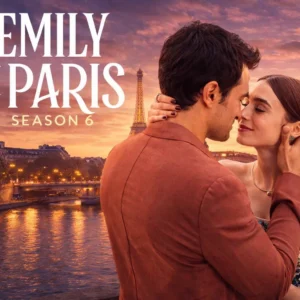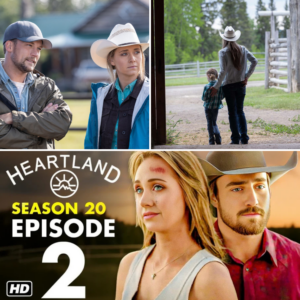
Since air is invisible, what would airbending look like in real life?
Fans of “Avatar: The Last Airbender” have pondered that question since the announcement of a live-action version of the series. The original Nickelodeon show portrayed Aang’s bending with a bluish, swirling look, but the team behind Netflix’s adaptation had a challenge on their hands when rendering those techniques in three dimensions.
Air, earth, water and fire — the four elements that Aang (Gordon Cormier) needs to master as the Avatar — each needed their own unique look and bending style, accomplished with a mix of both on-set and post-production efforts. Stunt coordinator Jeff Aro researched various martial arts techniques and taught the “Avatar” cast how to become a bending expert while executive producer Jabbar Raisani and visual effects supervisor Marion Spates created the realistic visuals for the elements.
Like its predecessor, Netflix’s “Avatar” boasts many flashy bending fights sequences. Aang and Zuko (Dallas Liu) pit fire and air against each other in multiple battles; Katara (Kiawentiio) tests her still-new waterbending skills against a Northern Water Tribe master; and King Bumi (Utkarsh Ambudkar) gives a rockstar earthbending performance against Aang, his childhood friend.
With Variety, “Avatar’s” stunt and visual effects experts explain how each bending style came to life, break down the Aang vs. Bumi battle and more.

Let’s start with air. How do you show airbending in live-action?
Jeff Aro: We started our exploration of bending by delving into the mythology, adding breadth and depth to the movements. When it came to air, we started with Qigong internal breathing, because authentic movement can be found in breath. That, with Bagua styles and Baguazhang techniques. And Jabbar’s team did an incredible job of adding dirt when Aang starts pushing air.
Marion Spates: Air was one of the hardest ones. How do you see air? We wanted to stay away from giving it a general color, because that color doesn’t match the scene. We leaned into this high-frequency distortion. If you look at the back of an F-22 where the engines are, you’ll see this heat distortion, this refractive layer. We also used some larger frequency distortions to break it up, and ran it through smoke simulations to give it more depth. We also leaned into the elements that Aang would be in: When he’s in Omashu, he would pull the sand. When he’s on the boat, he’s pulling some particulates from the water. When he’s in the snow, he pulls elements from the snow
How did you create the firebending?
Aro: Air and fire are quite light. They move quickly, and in some ways they’re similar. You’ll see the softness, but air doesn’t end. It continues to be playful and move. A master airbender might be feathering air through their fingertips. Although the beginning of igniting fire might look similar, the sharpness and explosiveness of what a firebender would do to send the fire became what defined and differentiated it.

And what about waterbending?
Aro: Water and earth are much more dense. We made sure the movement choices reflected that. With water being Tai chi, the first thing we had them do in our exercises was exhale, finding weight in their movements. The push and pull was inspired by the moon moving the tides. It eventually evolved to Chen-style Tai chi, which has a hard snap to it. That element works really well when you’re doing the water whip that Katara uses.
Jabbar Raisani: I think water is the hardest. It comes down to all of us being very familiar with water. We know how it moves and what it looks like. When you have to make water do something that it’s not supposed to do it, everyone’s a critic.
Spates: We looked at water in space, because we had a zero-G element to it. We looked at slow motion water, and then tons of throwing buckets of water in slow motion to look at it actually does.
The Aang vs. King Bumi fight is one of the biggest showdowns in the season. How did you create his earthbending technique?
Aro: When it comes to earth, it’s a hard breath. You want to a strong exhale, intricate wrist movements and in the waist. Those are things that you’ll see in Hung Ga, Fut Ga and Wing Chun styles.
Raisani: One of the really cool things we did is when Aang gets stuck in the sand. That is a pit of sand full of nitrogen bubbles that SFX did. When you run nitrogen through the sand, it becomes like liquid. So Gordon ran on top of real sand, hit the nitrogen sand, sinks into it. They turned the nitrogen off and then it literally locks you in. Like you’re buried in the sand. After that, he gets pulled out of the real sandpit using stunt wires. So we did all that stuff in-camera. We augment it with visual effects and paint out the wires, but it’s really trying to find those little pieces of magic you can do practically, and then enhance everything that you need to with visual effects.

Bumi throws so many rocks and boulders at Aang during the fight. Were any of those real or were they CGI?
Spates: Those are all CGI rocks. We didn’t want it to make it look like there were pre-made rocks just ready to be executed out of the ground. So we really put a lot of thought into how to build the rocks to make it look like it’s a combination of earth materials that are under the ground.
Raisani: If you look closely, you’ll see the boulders that come up are actually fully formed rocks. There’s some dirt, mud, sand, leaves and roots, so it really does feel like they’re compacting these things under the earth.
The fight starts with Bumi jumping up and kicking a boulder at Aang. How much of it was CGI and wirework?
Raisani: That one is Utkarsh with a harness rig; it was a jump and a two-foot kick. So he came up, and stunts rigged it so that Utkarsh has the ability to lean back and not flip. But it’s also a lot of ab work for him. He was exhausted, because if you go too far back and let your chest fall, you will flip upside down. So you have to go backwards, but not so far that your center of gravity flips to where your head is too heavy. It was really difficult to time and weigh it so that your abs are supporting your body and your legs are kicking out.
How did you shoot the moment where Aang jumps over the boulder in slow-motion?
Raisani: For the shot where he lifts off the ground, that is wires. For the shot where we’re above him and he’s leaning back, Jeff and his team put together a special arc rig that’s green, and Gordon’s able to lie on top of it. He’s angled how we want him, but he’s fully supported the whole time. The whole rig is on a teeter-totter, or almost a wheel, and they can roll Gordon over the arc. So Gordon looks like he’s rolling backwards, but it’s really the rig moving, and then the camera’s countering that. It feels like a backflip, but it’s a combination of Gordon moving, the camera moving, green screen below, and then we put it all together with the visual effects.
And then finally, Azula learns how to bend lightning near the end of the season. How did you create this subset of firebending?
Raisani: Luckily, Marion is a lightning expert.
Spates: We did some lightning in “Lost in Space” Season 2. It’s obviously looking at real lightning and studying it and giving it complexity. It’s really just a lot of a lot of multiple advanced glows that give you the illusion and makes it come to life.
Raisani: He had tons of reference. He’s like, “Oh yeah, look at this four-hour video of lightning. At minute 27, you’ll see this lightning strike and this is a good reference.”



